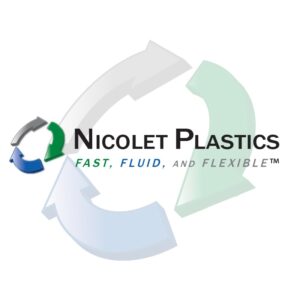February 21, 2017
Benefits of Metal to Plastic Conversion for Agricultural Parts
Metal to plastic conversion processes have been used for decades; however, many manufacturers have not considered all the benefits that can be applied to improve products. Guided by the ability to reduce weight and improve fuel efficiency, automotive and aerospace companies have been among the most active in converting metal to plastic. Another industry highly impacted by metal to plastic part conversion is agriculture. With advancements in design, engineered plastics can be just as strong and chemical and heat resistant which makes plastic a great option for fluid handling systems and other high-temperature applications. Here are a few other benefits that manufacturers of agricultural products will see with a metal to plastic part conversion.
- Design Flexibility:
One of the greatest aspects of converting metal agricultural parts to plastic is the design freedom that is created in the process. It is recommended to work closely with an experienced injection molder and design engineer to gain an understanding of the features that should be taken into account to maintain a complex structural design for your part. Specifically, it’s more efficient to create complex parts out of plastic than metal because injection molding easily allows for under-cuts, threads, ports and tight tolerances.
The design flexibility also enables greater strength in plastic parts. With the ability to mold in features for structural strength like ribs, bosses and gussets, strength can be increased without adding additional cost. - Weight:
Reducing part weight with a metal to plastic conversion is another big advantage of the process. Reducing part weight by using plastic gives you more parts per pound of material, significantly reduces shipping costs, and oftentimes improves the end-user’s ease of use with the product. Additionally, in some applications reducing part weight can improve gas mileage and boost recycling opportunities. - Cost:
In general, agricultural product manufacturers will see an overall cost reduction for metal to plastic part conversion. There are several ways that cost reduction comes into play throughout the design and injection molding process:- Multiple metal parts can be replaced by one injection-molded part made of durable, engineered plastic – eliminating the need for fasteners and assembly
- Colors can be added to the plastic polymer, eliminating secondary operations for painting or laser marking
- The need to weld, grind, and add dent and scratch resistance and noise dampening is eliminated
- New and Improved Polymers:
The continuing advancements in polymer development have enticed many product engineers and designers to evaluate the use of traditional materials such as metal. New and improved polymers have allowed part manufacturers and injection molders the ability to produce parts that were once thought of as impossible to create with plastic.
Advanced polymers with specific fillers and reinforcements also allow engineers the ability to add a significant amount of structural integrity to molded parts. With the proper selection and design optimization, plastic parts can be as strong as metal.
Not only do these elements ensure a smooth manufacturing process of components and/or finished products, it provides the ability for you to go to market quicker while remaining within your budget.
Injection molding plays a vital role in the development of products that serve a plethora of industries. It’s a fluid manufacturing practice that involves a series of complex processes, but finding the right partner makes all the difference in the success of your part. If you’re unsure of how to benefit from the injection molding trends predicted for the year ahead, contact our knowledgeable design engineers, tooling and production experts today.
